By Stacy Burger
Student loan debt is a national crisis, reaching its highest levels ever in 2019.
Student debt is the only consumer debt with continuous cumulative growth since the Great Recession, according to Bloomberg. And according to Forbes, student loan debt totals over $1.5 trillion with 45 million people across the U.S. having some type of student loan debt.
Both millennials and baby boomers deal with student debt, and studies show Generation Z is looking to avoid it.
Many students take to less expensive alternatives when it comes to the soaring costs of tuition at public and private universities. Community colleges provide students a financial advantage. Students can prepare for the financial demands of a four-year university in their first two years at a community college.
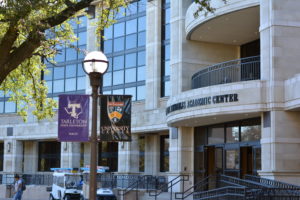
The University Center at McLennan Community College is committed to students looking to earn their bachelor’s degrees without debt. University Center Director Annette Scott helps students combat student loan debt.
“In general, I see students that get out of college and they end up getting a wonderful job with that college degree,” Scott said. “But they end up spending 15 to 20 years, some of them, paying for their college debt.”
Scholarships play a large part in avoiding that debt. Scott encourages students to be proactive in finding scholarship opportunities and to apply for all the scholarships they can.
“There’s aid out there that goes unclaimed simply because people don’t apply for it,” Scott said.
Attending community college can alleviate that financial burden, as well.
“If you can get your freshman and sophomore level classes from a community college, that’s always the best thing to do. You save a lot of money,” Scott said.
Most students work to pay for expenses throughout college. Some employers will award tuition assistance based on certain criteria the company decides on.
Companies like Chipotle, Chick-fil-A, Starbucks, Smuckers, Verizon, Bank of America, Oracle, UPS and Fidelity among others, offer tuition reimbursements to employees.
“If you have an employer, go to the human resources desk and see if they reimburse for college debt,” Scott said.
Despite rising tuition costs of four-year universities, there are alternatives to avoid student loan debt altogether. Seeking out scholarships, attending community college or finding an employer that will reimburse for tuition costs are some ways to avoid the student debt.
“It’s nice when people can finish their college degree and walk across that stage debt free,” Scott said.

Stacy Burger is a Marketing and Communications Intern at McLennan Community College. She is a senior at Baylor University studying Marketing & Public Relations and hopes to work in sports or entertainment. As a Colorado native, she enjoys all things outdoors.
By Ricky Galindo
The Hispanic Student Association at McLennan Community College is comprised of two co-leaders, Aranza Torres and Ruben Salazar. The rest of the members are students, who largely lead the organization. Essentially our purpose or our drive for this organization is to be inclusive of people of all kinds, and that’s not something one tends to see these days. As much as people preach about being inclusive, there is still some sort of bias as to what people should be included. We really want to bring that awareness of inclusiveness. Because everyone is different, we all have our own strengths and weaknesses. Ruben and Aranza do a great job at picking up on these things that the students themselves might not realize.
The students are the voices of this organization. They are nurturing their minds and sharing what they have learned either from school or through their own research. It’s minds like these that will drive this world. As kids—and I think I speak for everyone on this—we have questions about any and everything and we look to our parents who often don’t have an answer other than, “Because I said so.” That answer can only work for so long, until the child starts to look for other sources of information and begins to educate themselves. There’s a certain point of “adulthood” or life after college where that desire for learning starts to fade away. Our hope is to keep this drive for learning beyond this organization and life after college. During our meetings we usually talk about a variety of subjects ranging from things like the environment, culture, society, etc. But HSA isn’t always so serious, we like to have fun at these meetings as well and can discuss topics like movies, tv shows and even food.
I am proud to announce to you that this great organization is working on a project that will include the whole community! We are hosting a Waco Ciclovía!
What is a Ciclovía and where did we get the idea?

It all began, in Bogota, Colombia. Each Sunday and public holiday from 7 am until 2 pm several main streets are blocked off for cars and runners, skaters, and bicyclists take over the streets. The event takes on the feeling of a fun health festival with different groups setting up spaces for aerobics, yoga and other fitness and health activities. In Bogata, the weekly Ciclovías are used by over 2 million people. (about 30% of the population). (Ciclovía)
Ciclovía began in Bogota in December of 1974. It was started by a man named Jaime Ortiz Mariño. In 1976, the city officially adopted the program, which was promoted by the city government and the transportation department. In 2007 a Colombian congressman proposed a law banning Ciclovías, stating that they caused traffic jams. Many cyclists, Ciclovía users, city council and congress members protested this law and the law was soon defeated. Since then, every Sunday Bogota closes down ten of their busiest roads for the Ciclovía.
Our hope for this event is that through true social networking – human interaction – we can strengthen our community and stress the importance of things like our environmental impact. It is also to show how easy and fun it can be to exercise for just minutes a day. Another hope of ours is to expand this event beyond the campus of McLennan Community College and make this a city-wide event. We believe what we are doing matters and our event is just as important as many of the other festivals and events that have gained popularity around town.
The Hispanic Student Association is currently accepting donations for this event and will continue to accept contributions during the event —anything and everything helps. We are also looking for volunteers, so if you would like to help follow the link below. Our Ciclovía will take place on November 9th at 8am-12pm, in the center of MCC Campus. I hope you and your family and friends will join us!
Volunteer: https://volunteersignup.org/Q7Y3Q<https://volunteersignup.org/Q7Y3Q
Donation: https://commerce.cashnet.com/mclennanem1pay?ITEMCODE=EM1-HSA

Ricky Galindo graduated from McLennan Community College with an associate’s degree in the visual arts. He is a photographer and has won two awards for his photos. He has appeared in three of MCC’s literary magazines and in one in Florida. He photographs bands, people and things on the street he finds interesting. He has also helped with photography for Analog Waco. He loves reading books and having good conversations with people and doing normal people things.
By Hilary Yancey
It’s an exciting time at Holy Spirit Episcopal Church! This fall, we opened a new playground on our campus on Wooded Acres Drive, just behind the Target. The playground, geared towards developmental ages 2-6, is not only well-shaded and features fun musical instruments but it is also disability-inclusive and accessible. The turf is anti-static, which means that unlike some other turfing or playground surfaces, it does not interfere with cochlear implants or other hearing aids. It’s also fall-safe from a height of 6 feet. Children can play on the small hill (complete with tunnel) in safety and the turf is easily learnable for anyone with vision differences. The space has high-contrast colors for visual cueing, is completely level for wheelchairs, scooters or other mobility devices to access directly from the accessible parking in front. There are ADA-compliant bathrooms on site. The last feature – picnic benches that include cutouts for wheelchair roll-up, went in just a couple of weeks ago.
I’m a mom of a son with disabilities, and in the four short years I’ve been privileged to parent him, I’ve often longed for spaces where his needs can be not only heard but also anticipated. The playground is a space, we hope, that anticipates the needs of children with disabilities from the very beginning. My Jack loves the drum and the big xylophone at one end of the playground, and riding the tricycles that are available during the church’s business hours to ride around the trike path. With my son’s visual differences, I worry in some playgrounds that he won’t be able to safely navigate the drop into the play space or the distance between some of the structures. This playground is a space where I am confident he can learn the space through all of his senses – the turf, the hill, the other color contrasts, the sounds – and play freely.
I’m also a philosopher, finishing up my PhD in philosophy at Baylor. Over the past few years, I’ve spent more and more time trying to better understand and appreciate how we can think better about the nature of the human person. It is all too common to think of disability as merely bad or unfortunate, or to think that individuals with disabilities must have a worse quality of life than others. But these conclusions are too hasty. Like so many features of our lives, disability is—from what I understand from listening to the testimony of individuals with disabilities—complex, many-faceted, often both beautiful and difficult. What makes many disabilities particularly difficult is not a person’s bodily situation but the structures of his or her society. Are there accessible bathrooms or doorways? Is there a quiet space nearby where someone can reset after being sensorily overwhelmed? Are the places and activities that we create in our communities aware of and appreciating how all members of our community might need to access them?
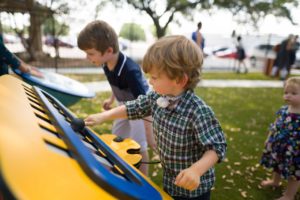
Part of our mission at Holy Spirit over the next several years is to create a space where we live out our core belief that all people are made in the image and likeness of God. For too long, individuals with disabilities of varying kinds have suffered injustice, from lack of access to shared and communal spaces, to lack of understanding and listening to their experiences, to lack of opportunity to lead in our communities according to their gifts and callings. We hope, in small and concrete ways, to begin righting these injustices by creating new spaces for our communities where individuals with disabilities to be welcomed and their needs to be listened for, understood, and met.
As I continue to live in and make Waco my (and my family’s) home, I am grateful and excited by the things happening to create more spaces of welcome and inclusion for individuals with disabilities: from the No Limitations sports organization to the sensory friendly Trunk or Treat at Elite Therapy Center, to the community life at Friends for Life. We hope to see the playground at Holy Spirit become such a space of welcome and inclusion.
This fall we also marked the start of our inclusive recreational ballet class – a weekly class, free to parents, open to students with or without disabilities to come and enjoy ballet together. We meet in our Parish hall on Wednesdays from 4:45 – 5:30, and we are always welcoming new students ages 3-12 to come and try it out! If you have any questions, contact Hilary Yancey at [email protected].


Hilary Yancey loves good words, good questions, and sunny afternoons sitting on her front porch with Pinewood coffee. She and her husband, Preston, and their two children, Jack and Junia, live in Waco, Texas, where Hilary is completing her PhD in philosophy at Baylor University. Her first book, “Forgiving God: A Story of Faith” is on shelves now!
The Act Locally Waco blog publishes posts with a connection to these aspirations for Waco. If you are interested in writing for the Act Locally Waco Blog, please email [email protected]for more information.
By John Jenkins
Transformation Waco is now accepting applications for the Transformation Waco Urban Educator Residency Program (TWUERP). Click www.transformationwaco.org for more details and the application.
Transformation Waco is a nonprofit, in-district partnership within Waco ISD. They manage and operate five schools within the district: Alta Vista Elementary, Brook Avenue Elementary, G.W. Carver Middle School, Indian Spring Middle School, and J.H. Hines Elementary. The goal of the partnership is to dramatically improve outcomes for students.

We are seeking highly committed and dedicated individuals who want to make a positive impact with Waco students by becoming teachers. The state, the region, and Waco are dealing with a teacher shortage, particularly for high need schools. To attract, train, and retain high quality teacher applicants we are offering a tuition free path to teacher certification and a master’s degree in curriculum and instruction from Tarleton State University.
The Transformation Waco Urban Educator Residency Program (TWUERP) is an innovative partnership between the Academy for Urban School Leadership (AUSL), Tarleton State University (TSU), and Transformation Waco (TW) to provide participants with the training they need to be prepared to teach in the challenging, fast-paced environment of today’s classrooms.
The TWUERP is an alternative certification pathway for experienced professionals or recent graduates seeking to become highly effective teachers through hands-on training. This highly selective program will only accept and certify the highest-potential candidates who have the time and energy to fully commit to a rigorous graduate program and the necessary focus to learn and apply best practices in pedagogy.
Over the course of the two-year program, participants in TWUERP earn a master’s degree and teaching certification through a cohort-based learning experience while leading a classroom at one of the five Transformation Waco campuses. Participants receive personalized support from AUSL and TSU experts to gain the skills needed to become highly effective educators and to join an elite group of educators who learn, teach, and inspire in Waco. The TWUERP requires commitment, so aspiring educators must commit to serving in a TW school for at least 5 years in order to be eligible to enter the program of study.
Participants will earn a M.Ed in Curriculum and Instruction from Tarleton State University (TSU) through the Tarleton Model for Accelerated Teacher Education (TMATE) program. TMATE provides a program of study where participants will earn a master’s and alternative certification through a cohort-based learning experience in a hybrid online and in-person environment. The full cost of tuition is covered for participants who successfully complete both years of the program.
The process for this second cohort will be:
Applications will be reviewed by the Transformation Waco team on a rolling basis. Qualified candidates will receive an invitation to interview no later than January 31, 2020.
During your interview, you may be asked to deliver a sample lesson and speak with program representatives about your experience, qualifications, and passion for teaching.
If accepted, the first phase of the program is an internship. Interns will participate in a yearlong urban teacher training program facilitated by the Academy for Urban School Leadership (AUSL). During the training year, participants will work with a carefully selected and trained mentor teacher in the classroom and receive intensive professional development from AUSL and TSU that will enhance effectiveness.
Interns will be invited to participate in either spring or summer programming (this does not guarantee a teaching placement).
- Spring Programming: Early accepted and qualified interns will be eligible to start working in January 2020. Up to eight interns will be invited to start substitute teaching full-time in Transformation Waco schools for the spring semester. This will allow interns to develop practical teaching skills while networking with campuses to secure fall employment opportunities.
- Summer Programming: Summer Internships are a full-time (8am-5pm) commitment over the course of 8 weeks, starting June 1, 2020 with a break for the week of July 4th. Selected interns will receive high-quality professional development, practical teaching experience in summer school, and support for passing the certification content exam. Interns will receive a $640 weekly stipend for summer programming.
Upon successful completion of spring/summer programming, and passing the content exam, interns who have performed well will be eligible to be hired as “residents” and invited to lead a class at one of the five Transformation Waco schools. They will start with an annual teaching salary of $49,000, competitive health benefits and an opportunity to earn additional stipends after the first year of teaching.
You can apply to be a part of the second cohort to TWUERP at: www.transformationwaco.org or contact the residency director at: 254-754-9448 for more information.
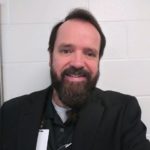
Dr. John Jenkins is a Talent Developer for Transformation Waco. He has been in public education since 1995 with multiple Texas school districts. His role experiences include Student Initiatives Director, High School Principal, Alternative and Virtual School Principal, DAEP and District Training Principal for Administrators and Teachers, Middle School Principal (Waco ISD), Academic Dean, Assistant Principal, Special Education Coordinator, and Teacher. This is John’s sixth year at Waco ISD and is currently working with the Alternative Teacher Certification Program to increase teacher retention in Waco. He lives by the motto that “work is not work if you love what you do.” John is grateful for his time in Waco and working alongside the many caring and supportive family, organization, and teaching partners who put children first.
By Michaela McCown

Several times a year, but especially in October, my husband and I make an effort to get out of Waco for a weekend and enjoy the scenery at one of our local state parks. We hike, kayak, watch birds and wildlife, camp, stargaze, and use the time out in nature to decompress from the busyness of our jobs and reconnect with the environment around us. This time is particularly essential for my sanity, and I appreciate having such beautiful public parks around Texas to go visit!
Studies have shown the benefits of spending time outdoors – nature experiences may reduce stress, anxiety, depression, and attention deficits (Kellert, 2005; Louv, 2005, Buzzell & Chalquist, 2009). With over 80% of North Americans living in urban areas, it is essential to have public spaces for people to go out and enjoy nature. In Texas, Texas Parks and Wildlife Department (TPWD) is one of the main organizations that fills that niche through the Texas State Park System.
TPWD maintains 80 state parks across the state – from Big Bend Ranch and Franklin Mountains State Park in West Texas to Caddo Lake State Park on the Eastern Texas border. We have our own selection of beautiful state parks within an hour’s drive of Waco: Mother Neff, Meridian, Lake Whitney, and Fort Parker State Parks. Parks across the state keep getting busier as more people move to Texas and discover these gems. Unfortunately, TPWD has not been able to keep up with the higher demand and traffic in these parks: more parks have experienced damage to facilities that they have not had time or funding to repair, and parks across the state have become overcrowded. During the upcoming election on November 5th, you can vote for Proposition 5 to help direct more funding towards Texas State Parks to address maintenance concerns, facility upgrades, and even develop new state parks altogether.

Voters may be concerned that Proposition 5, though great for the state parks, would mean more taxes for Texans. However, there is actually no increase in taxes through Proposition 5 – it just ensures that funding that has already been allocated for TPWD actually goes where it is supposed to! The U.S. and Texas have a long history of setting aside funding for the management of wildlife and public lands – starting in the 1930s with the Federal Aid in Wildlife Restoration Act. This act, also known as the Pittman-Robertson Act, was approved by Congress in 1937 and implemented a tax on hunting goods to fund wildlife conservation across the nation. This became one of the main tools to help fund wildlife conservation across the nation, and the effort was expanded in 1950 with the addition of the Federal Aid in Sport Fish Restoration Act, which taxes fishing goods.
In addition to the funding TPWD receives from these two pieces of legislation for wildlife conservation, TPWD also has to manage its state parks, which do not fall directly within the bounds of the Federal Aid in Wildlife Restoration or the Federal Aid in Sport Fish Restoration Acts. Our state parks, to ensure that they are available to individuals of all income levels, are not self-supporting and rely on outside funding sources. Before 1994, a minor tax on cigarettes helped to fund our state parks. In 1993, the Texas Legislature decided to expand the idea of the Federal Aid Acts described above and devote the portion of taxes already collected on sporting goods back to state parks and historic sites. This is called the Sporting Goods Sales Tax Allocation, and, when it was created, had great potential to contribute a consistent amount of annual funding to our state parks and historic sites.
Unfortunately, since its establishment in 1993, most of the Sporting Goods Sales Tax Allocation has not been used for state parks and historic sites but instead has been used to balance the state budget. This has made it incredibly challenging for TPWD to maintain a consistent budget for the state park system and has led to budget shortfalls and almost $800 million in deferred maintenance (Tatum 2019).
If passed on this upcoming ballot, Proposition 5 will ensure that the intention of the 1993 Sporting Goods Sales Tax Allocation is actually followed – that the money already set aside for state parks will, in the future, always be allocated towards state parks. Proposition 5 will not raise the current tax rate that Texans pay, and it will have immeasurable impacts for the public wild spaces we so dearly love. If you want to know what specific projects will benefit from this additional funding, TPWD has a list of current projects on their website at TexasStateParks.org/BrighterFuture. So please, get out and vote for Proposition 5, and then go visit a state park to appreciate how your voting decision will help keep Texans wild for generations to come.
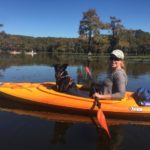
Michaela McCown is a native Texan whose passion for wildlife and conservation stemmed from her experiences growing up on a ranch outside of Dripping Springs. For the last several years, Michaela has been teaching biology and environmental science at Vanguard College Preparatory School in Waco, TX. In addition to teaching, Michaela serves on the Sustainability Board for McLennan Community College and on the Board of Directors for the Texas Land Conservancy. In her spare time, Michaela enjoys spending time with her husband and dog while they explore Texas by foot, bike, and kayak.
The Act Locally Waco blog publishes posts with a connection to these aspirations for Waco. If you are interested in writing for the Act Locally Waco Blog, please email [email protected] for more information.
Halloween is coming soon, and children will be out in their neighborhoods to enjoy treats, fun, and games. Motorists and pedestrians can take steps to make this year’s Halloween a safe one!
Although Halloween comes before the change back to standard time this year, the days are getting shorter, and the nights are getting longer. With shorter days comes more night driving. Because nighttime driving is more dangerous, it requires extra attention from motorists as well as pedestrians. NHTSA also reports that nearly two-thirds of all fatal pedestrian crashes occur in lowlight conditions.
Sadly, Halloween also increases the number of drunk drivers on the road at night. The National Highway Traffic Safety Administration reporting 42 percent of those killed in traffic crashes on Halloween night from 2013 to 2017 died in crashes involving a drunk driver.
The large number of young pedestrians out on Halloween evening makes this an especially dangerous time. Here is a scary fact from the National Safety Council, children are more than twice as likely to be hit by a car and killed on Halloween than on any other day of the year. That’s why Texas A&M AgriLife Extension Family and Community Health Educator Colleen Foleen, McLennan County reminds motorists, parents and children of the following safety tips to keep in mind during Halloween and all year long.
Tips for Motorists
- Avoid using handheld electronic devices.
- Remember that as soon as you step out of your car, you become a pedestrian.
- Be especially alert for all road users, including pedestrians, at night.
- Slowdown in areas where pedestrians are likely to be or where sight distances are limited. Keep your windshield clean. Watch for children walking on roads, medians, and curbs. Enter and exit driveways carefully
- Be especially alert for children darting out from between parked vehicles and from behind bushes and shrubs. They’re excited – and they are not paying attention.
- Never drink and drive – tonight or any night. If you are partying, designate a driver.
- If you see a drunk driver or impaired pedestrian on the road, contact local law enforcement.
Tips for Parents
- Adults should accompany children at all times and supervise their “trick or treat” activities.
- Teach children to “stop, look left-right-left, and listen” before they cross the street.
- Use a flashlight, and wear retro-reflective strips or patches on your clothing or costume to be more visible to motorists.
- Be certain that the mask does not obstruct vision or hearing.
- Ensure that costumes do not impede walking or driving ability.
Tips for Pedestrians (children and adults)
- Before crossing a street, stop at the curb or edge of the road and look left, right, and left again to be sure no cars are coming. Continue to check for traffic while on the street.
- Walk – never run – from house to house or across the road.
- Cross the street only at intersections and crosswalks.
- When crossing at an intersection with a traffic light, be sure to watch for turning cars. Obey all pedestrian signals.
- Walk on sidewalks whenever possible. If there are no sidewalks, walk on the left side of the street facing traffic.
By taking some extra time to make sure drivers, pedestrians, and bicyclists obey the rules, Halloween can be a safe time for all.
This information is provided by The Texas A&M Agrilife Extension
On October 29th and 30th of this year, in countless settings and places throughout the world, people will celebrate the 200th anniversary of the birth of the Báb, whose revitalizing message prepared the way for the coming of Bahá’u’lláh, the founder of the Bahá’í Faith.

The Báb’s message was simple but challenging and provocative to the Islamic clerics, politicians and Persian aristocracy. Because of this, he was martyred in 1850, at the age of 30. It’s a dramatic story, and one which was recounted around the world.
Siyyid ‘Ali-Muhammad was born in 1819 in Shiraz, Persia, and later took the title “the Báb,” which is the Persian term for “the Gate,” as he was the herald who prepared the way for Bahá’u’lláh, founder of the Bahá’í Faith, much as John the Baptist prepared the way for the coming of Jesus. The Bab, however, was able to continue his writing and preaching, and survived long enough to found his own religion, which as the precursor to the Bahá’í Faith, later founded by Bahá’u’lláh.
Bahá’u’lláh, which translates as “The Glory of God,” was born in 1817 as Mirza Husayn-‘Ali in Núr, Persia. He announced in 1863 that he is God’s messenger for this age. Bahá’u’lláh’s teachings and sacred writings are the basis of the Bahá’í Faith, an inclusive monotheistic faith that has grown to more than five million believers in nearly every country and territory across the globe. Bahá’u’lláh proclaimed that God, our loving creator, sends divine messengers or Manifestations of God. Since God has never abandoned mankind, there have been many such Manifestations –some of them possibly lost to history– but each have brought human civilization to ever higher levels of spiritual and material advancement. Bahá’ís believe that Bahá’u’lláh is the latest in this long line of known Divine Messengers, which has included Abraham, Moses, Krishna, Zoroaster, the Buddha, Jesus, Muhammad, and the Báb.
The Bahá’í Faith is the fastest growing religion on earth, with more than five million adherents on every continent. Bahá’ís can also be found in every state and thousands of communities throughout the United States. Bahá’ís have been active in Waco since the 1950s, when a group of Dallas Bahá’ís travelled to Waco in order to expand the Faith in central Texas. The Waco Bahá’í Center at 2500 Bosque Blvd. offers devotional programs, children’s classes, and study circles for spiritual education for people of all backgrounds. For information, check www.wacobahaicenter.org or call (254) 300-4949. To learn more about the Bahá’í Faith in America, visit www.bahai.us.
NOTE: To better understand the Bahá’i Faith in America, check the Religion Newswriters Association’s “Source Guide on the Bahá’í Faith” at http://www.religionlink.com/source-guides/the-bahai-faith-a-source-guide-for-reporters/.
NOTE: Báb is pronounced “BAHB.” Bahá’u’lláh is pronounced “Bah–HA-oh-LAH.”

Michael Jones is a native of west central New Mexico. In 1993, Michael arrived in Waco, Texas to begin a second career as writer and producer of student recruitment and college marketing videos, as well as developing curricula for interactive and multimedia education programs for Texas State Technical College Waco.
The Act Locally Waco blog publishes posts with a connection to these aspirations for Waco. If you are interested in writing for the Act Locally Waco Blog, please email [email protected] for more information.
Press release
Mentor Waco Coalition, a Prosper Waco working group, has worked diligently to pair the young minds of Waco with community leaders who want to see them succeed. The coalition promotes awareness for current mentoring opportunities in Waco and brings leaders together to educate future mentors.
On October 26, 2019 at 9:00 to 11:30 a.m., the Mentor Waco Coalition will continue to advance that goal with a morning of training for any current or potential mentors in the Waco community who would like to learn more about the difficulties Waco students face and how to help them overcome those struggles. The training will be held at Columbus Avenue Baptist Church, and there is no cost to attend. Pastries and coffee will be provided.
Brittany Fitz, director of Research and Evaluation at Prosper Waco, has attended multiple training sessions and said she believes in the value of these opportunities. “What’s really great about the Mentor Coalition meetings in general is it brings together people that are doing similar work to really make sure that they are common in the best practices,” Fitz said. “So, the upcoming training they have is to address the need that they saw across all organizations.”
With this upcoming mentor training opportunity, Waco leaders from different organizations will discuss their own efforts and the nuances and lessons from their experiences. Training participants will get to hear from professionals who understand the ins and outs of helping the Waco community and ask questions to further their own understanding of the topics offered. Session one choices include: “Behavior/Redirection” led by GL Wiley Elementary Principal Craig Cox, GL Wiley Middle School Assistant Principal Melody Herring, and founder and executive director of the organization Size of a Man Darryl Thomas; or “Bullying/Self Esteem” led by STARRY Team Supervisor Leah Gorham. Session two choices include: “Social Media Tips/Awareness” led by Dr. Soo Battle, a pediatrician and founder of Camp Careful, and Chelsa Ressetar, the director of advancement at Vanguard and a speaker on digital citizenship; or “Human/Sex Trafficking” led by a representative from Unbound.
“I think one of the biggest draws for these presentations is the fact that we not only have great experts in each of the discussion areas, but we are intentionally keeping a large portion of each session dedicated to Q&A,” said the Mentor Waco Coalition Chair, Travis Cheatham. “Any attendee has the ability to connect with and ask direct questions of the presenters. I think all four of these sessions are areas that anyone, including the heads of mentoring organizations, could gain additional insight and experience from.”
This working group embodies Prosper Waco’s core value of collective impact, and with this training, more connections can be made to create a stronger Waco. To register, visit https://www.eventbrite.com/e/mentor-waco-training-conference-tickets-70686642651. Columbus Avenue Baptist Church is located at 1300 Columbus Avenue, Waco, TX 76701. For further information, please contact Travis Cheatham at [email protected].
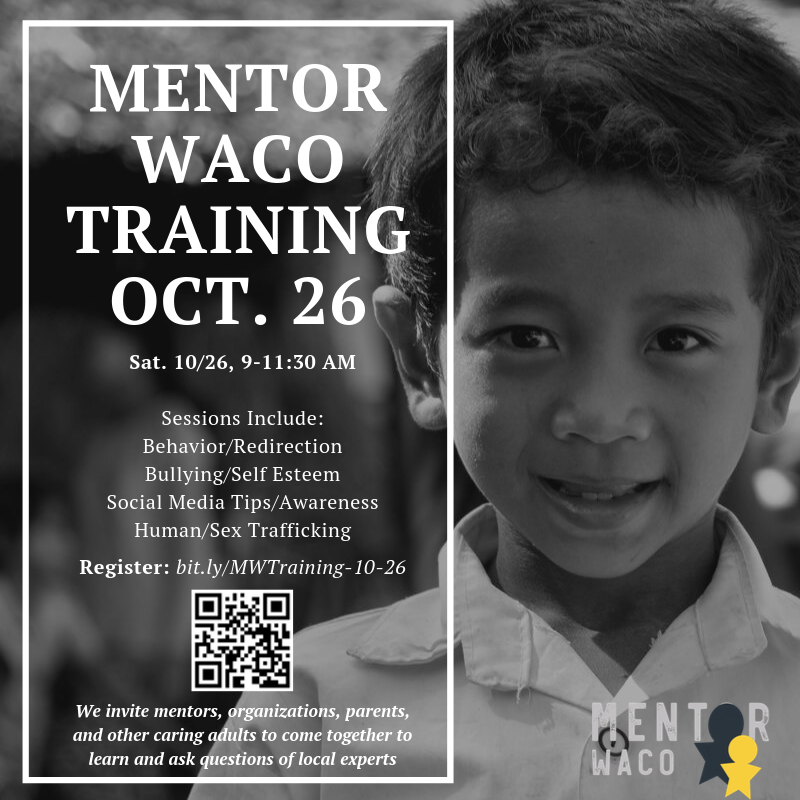
By Kay Schulz
When I approach Human Resource Managers that are not familiar with our Employer Resource Network, their typical response is that they already have an EAP provider and are not considering any others. My usual answer is that we don’t replace the EAP provider, we enhance it. Well, what does that mean?
I did some fairly in-depth research on EAP’s and what I learned was that they are all very different! Different in who they serve, what they do and how they do it. There are Managerial, Organizational, Administrative, Individual and Combination EAP’s. Many EAP’s are part of large health insurance companies, some are independent and some are owned and operated by the employer as an “Internal EAP.” Employees often don’t utilize the company EAP because they don’t know just exactly who they are talking with regarding their most private issues, since the interaction is typically by phone or computer.

So how does our Waco Employer Resource Network (WERN) service compare to most EAP’s? The WERN program is not focused on wellness, mental, or behavioral health, but rather on “life circumstances.” The WERN Success Coach is not a psychologist or licensed social worker. WERN does not have a website with generic advice on common problems, nor do we offer a toll-free help line with 24-hour access!
What WERN does offer is navigation to local social services, public assistance and private agencies delivered by one-on-one, face-to-face, confidential meetings with employees. The Success Coach has the connections and service partners in place to assist workers in finding solutions for the barriers that can interfere with employment. This includes the basic needs of life: feeding and housing a family, paying utilities, transportation, work clothing and other provisions. Satisfying the basic needs will serve as a foundation for workers so they can concentrate on their jobs and possibly achieve upward growth.

Katy Schulz is the WERN Liaison. She connects employers with Success Coach services that support their workers to succeed at work and in life. In her spare time she volunteers with TOSA to grow the number of registered organ and tissue donors in the area and to spread the word that the Gift of Life is a true miracle for us all!
The Act Locally Waco blog publishes posts with a connection to these aspirations for Waco. If you are interested in writing for the Act Locally Waco Blog, please email [email protected] for more information.
Top 10 “Most Opened” Blog Posts of 2019: # 5
By Ellie Triplett
If you avoid gluten for any reason, eating out can be a challenge. If you’ve been doing it for any amount of time, you’re probably an old pro at the basics of avoidance when it comes to regular menus. But what about when you want something as classic as a cheeseburger? Where do you go for your macaroni and cheese cravings? Where can you find gluten-free pancakes? Or, the golden chalice of gluten-free eating, where can you go for pastries? Never fear, my friends, you are in luck. I am here to tell you that you are living in a town with a growing culinary culture, with restaurants that provide an impressive array of allergen friendly dining options. What follows is a very basic, non-comprehensive list of where to find your fill of sans-gluten treats in good ol’ Wacotown.
It seems logical to start with breakfast. If you are looking for pancakes, Café Cappuccino (with three locations at 100 N. 6th St., 1101 Richland Dr., and 903 N. Hewitt Dr.) is known for its amazing, plate sized pancakes, and now they come in gluten-free! I have personally ordered and enjoyed them.
Uptown features wonderful vegan and gluten- free waffles at Luna Juice Bar (1516 Austin Ave.). In carrot, matcha, and strawberry, the waffles are made with oat flour, gluten-free flour, or coconut flour and topped with coconut whipped cream, and are DELICIOUS. Pair them with a smoothie, or a cold pressed juice and you’ve got a perfect breakfast. Luna Juice also has a full menu of delicious salads, soups, and wraps, if you need a quick lunch later in the day.
Down the street at Harvest on 25th (112 N. 25th St.) you can continue your breakfasting or slide right into brunch with gluten free muffins, pancakes, or avocado toast. They offer ways to make their entire menu gluten-free and also offer gluten- free pizzas.
Since we’ve moved on to lunch, and specifically pizza, it is worth mentioning that Poppa Rollos (a long time local favorite at 703 N. Valley Mills) offers a good gluten-free version, and both Slow Rise Slice House (7608 Woodway Dr.), and 900 Degrees Pizzeria (315 S. University Parks) have cauliflower crusts which are keto friendly as well as being gluten-free.
If you’re craving a hamburger, look no further than Tom’s Burgers (6818 Sanger Ave.) It is a mom and pop burger joint that has just recently been brought to my attention for their gluten-free buns.
A newer option with gluten-free buns and bread is Revival East Side Eatery (704 Elm Ave.). They have a full menu, including soups and salads, so you’re sure to find something for everyone.
If you’re looking for the kings of comfort food (in my opinion), macaroni and cheese and grilled cheese sandwiches, look no further than The Mac House (3428 Franklin Ave.). Their artisan sandwiches and macaroni creations are amazing, and worth every penny and every minute you’ll spend waiting (it’s a bit, y’all, but worth it!).
Which leads me to my favorite way to splurge on gluten-free food; the pastries. Fabled Bookshop downtown (215 S. 4th St.) has gluten free lemon poppy seed cake as a part of their newly opened café, alongside literary themed drinks and other snacks. However, Baked Bliss (1114 N. 15th St.) is truly the sweet spot for sweets (see what I did there?) with cinnamon rolls, cranberry orange scones, brownies, chocolate chip cookies, blueberry muffins, and bacon cheddar scones (if you’re feeling the savory side of things) all offered gluten-free daily. You can pre order their gluten-free bread, which they bake on Wednesdays in a completely gluten-free kitchen, on Tuesday mornings. They also have gluten-free cakes, cupcakes, lemon shortbread, and pecan shortbread cookies, all of which can be made ahead of time for special events.
Phew! It’s a lot! A couple of things to note as we wrap up. Firstly, I am not a food blogger, or really any type of blogger. In many of these cases, I have eaten and enjoyed the food, but this is not true across the board. As a result, I did not attempt to describe in too much detail the experience of eating the food, so as to be fair. Secondly, this is by no means a comprehensive list. If your restaurant, or your favorite restaurant was left off the list, it is in no way meant as a slight. I polled my friends, asked for help, and sent out a few cursory messages asking for clarification on menu items. The result is this post. If I made a grievous error, leave us a comment! Share your knowledge! Thirdly, it is important to keep in mind that there are no certified gluten-free kitchens on this list. Most things will experience some level of cross contamination, and you are, as always, advised to check with your servers and express your level of allergy, and make an informed decision for yourself.
Happy (and safe!) eating, friends!
A couple of other resources…
- Gluten Free Waco website and Facebook page.
- “Find me Gluten Free” app

Ellie Triplett is a book lover, weaver, former bee keeper, and enneagram four. She lives and works (and eats) in Waco alongside her spouse and their three children.
The Act Locally Waco blog publishes posts with a connection to these aspirations for Waco. If you are interested in writing for the Act Locally Waco Blog, please email [email protected] for more information.
